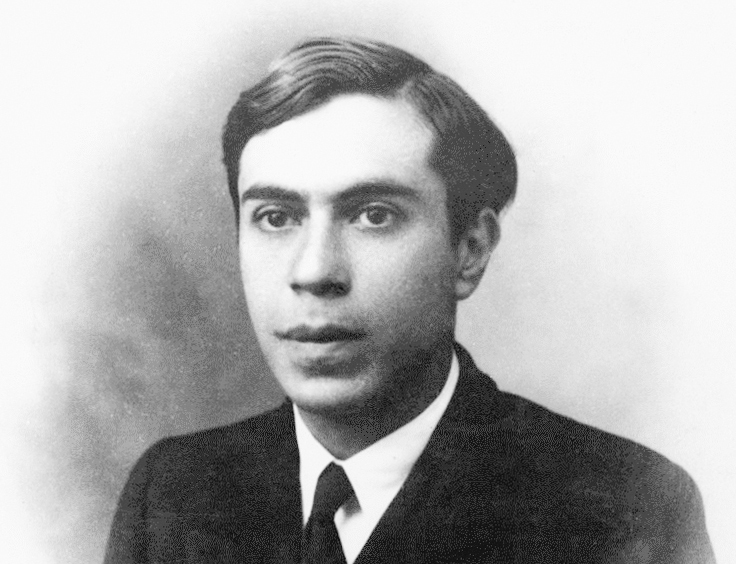340-A Vanished Physicist
Futility Closet
Greg Ross
4.8 • 748 Ratings
🗓️ 26 April 2021
⏱️ 33 minutes
🧾️ Download transcript
Summary

In 1938, Italian physicist Ettore Majorana vanished after taking a sudden sea journey. At first it was feared that he'd ended his life, but the perplexing circumstances left the truth uncertain. In this week's episode of the Futility Closet podcast we'll review the facts of Majorana's disappearance, its meaning for physics, and a surprising modern postscript.
We'll also dither over pronunciation and puzzle over why it will take three days to catch a murderer.
Intro:
By design, no building in Washington, D.C., is taller than the Washington Monument.
The Vienna Vegetable Orchestra plays instruments made of fresh vegetables.
Sources for our feature on Ettore Majorana:
Erasmo Recami, The Majorana Case: Letters, Documents, Testimonies, 2019.
Salvatore Esposito, Ettore Majorana: Unveiled Genius and Endless Mysteries, 2017.
Salvatore Esposito, The Physics of Ettore Majorana, 2015.
Salvatore Esposito et al., eds., Ettore Majorana: Notes on Theoretical Physics, 2013.
Salvatore Esposito, Erasmo Recami, and Alwyn Van der Merwe, eds., Ettore Majorana: Unpublished Research Notes on Theoretical Physics, 2008.
Francesco Guerra and Nadia Robotti, "Biographical Notes on Ettore Majorana," in Luisa Cifarelli, ed., Scientific Papers of Ettore Majorana, 2020.
Mark Buchanan, "In Search of Majorana," Nature Physics 11:3 (March 2015), 206.
Michael Brooks, "The Vanishing Particle Physicist," New Statesman 143:5233 (Oct. 24, 2014), 18-19.
Francesco Guerra and Nadia Robotti, "The Disappearance and Death of Ettore Majorana," Physics in Perspective 15:2 (June 2013), 160-177.
Salvatore Esposito, "The Disappearance of Ettore Majorana: An Analytic Examination," Contemporary Physics 51:3 (2010), 193-209.
Ennio Arimondo, Charles W. Clark, and William C. Martin, "Colloquium: Ettore Majorana and the Birth of Autoionization," Reviews of Modern Physics 82:3 (2010), 1947.
Graham Farmelo, "A Brilliant Darkness: The Extraordinary Life and Mysterious Disappearance of Ettore Majorana, the Troubled Genius of the Nuclear Age," Times Higher Education, Feb. 18, 2010.
Frank Close, "Physics Mystery Peppered With Profanity," Nature 463:7277 (Jan. 7, 2010), 33.
Joseph Francese, "Leonardo Sciascia and The Disappearance of Majorana," Journal of Modern Italian Studies 15:5 (2010), 715-733.
Frank Wilczek, "Majorana Returns," Nature Physics 5:9 (2009), 614-618.
Barry R. Holstein, "The Mysterious Disappearance of Ettore Majorana," Journal of Physics: Conference Series 173, Carolina International Symposium on Neutrino Physics, May 15–17, 2008.
Joseph Farrell, "The Ethics of Science: Leonardo Sciascia and the Majorana Case," Modern Language Review 102:4 (October 2007), 1021-1034.
Zeeya Merali, "The Man Who Was Both Alive and Dead," New Scientist 191:2563 (Aug. 5, 2006), 15.
Erasmo Recami, "The Scientific Work of Ettore Majorana: An Introduction," Electronic Journal of Theoretical Physics 3:10 (April 2006), 1-10.
Ettore Majorana and Luciano Maiani, "A Symmetric Theory of Electrons and Positrons," Ettore Majorana Scientific Papers, 2006.
R. Mignani, E. Recami, and M. Baldo, "About a Dirac-Like Equation for the Photon According to Ettore Majorana," Lettere al Nuovo Cimento 11:12 (April 1974), 568-572.
Angelo Paratico, "Science Focus: Italy Closes Case on Physician's Mysterious Disappearance," South China Morning Post, Feb. 15, 2015.
Antonino Zichichi, "Ettore Majorana: Genius and Mystery," CERN Courier 46 (2006), N6.
Peter Hebblethwaite, "Saints for Our Time," Guardian, April 17, 1987.
Walter Sullivan, "Finding on Radioactivity May Upset Physics Law," New York Times, Jan. 14, 1987.
Nino Lo Bello, "Is Missing Atomic Scientist Working for the Russians?" [Cedar Rapids, Iowa] Gazette, May 3, 1959.
Listener mail:
"Farmers Project Is Right on Time," New Zealand Herald, Feb. 6, 2012.
"Farmers Opens New Napier Store," Scoop, June 6, 2013.
Megan Garber, "The State of Wyoming Has 2 Escalators," Atlantic, July 17, 2013.
Brandon Specktor, "Believe It or Not, This State Only Has Two Escalators -- Here's Why," Reader's Digest, Sept. 8, 2017.
Audie Cornish and Melissa Block, "Where Are All of Wyomings Escalators?" NPR, July 18, 2013.
Natasha Frost, "Spiral Escalators Look Cool, But Do They Make Sense?" Atlas Obscura, July 5, 2017.
"Spiral Escalator," Elevatorpedia (accesssed April 17, 2021).
"Aussie," Wikipedia (accessed April 16, 2021).
"Sir George Cockburn, 10th Baronet," Wikipedia (accessed April 14, 2021).
"Naming Cockburn," City of Cockburn (accessed April 14, 2021).
This week's lateral thinking puzzle is taken from Anges Rogers' 1953 book How Come?: A Book of Riddles, sent to us by listener Jon Jerome.
You can listen using the player above, download this episode directly, or subscribe on Google Podcasts, on Apple Podcasts, or via the RSS feed at https://futilitycloset.libsyn.com/rss.
Please consider becoming a patron of Futility Closet -- you can choose the amount you want to pledge, and we've set up some rewards to help thank you for your support. You can also make a one-time donation on the Support Us page of the Futility Closet website.
Many thanks to Doug Ross for the music in this episode.
If you have any questions or comments you can reach us at [email protected]. Thanks for listening!
Transcript
Click on a timestamp to play from that location
| 0:00.0 | Welcome to the Futility Closet Podcast, forgotten stories from the pages of history. |
| 0:14.8 | Visit us online to sample more than 11,000 quirky curiosities from Washington's ceiling to a vegetable orchestra. |
| 0:22.2 | This is episode 340. |
| 0:23.8 | I'm Greg Ross. |
| 0:24.7 | And I'm Sharon Ross. |
| 0:26.5 | In 1938, Italian physicist Etterrey Mayerana vanished after taking a sudden sea journey. |
| 0:33.2 | At first, it was feared that he'd ended his life, but the perplexing circumstances left the truth uncertain. |
| 0:39.4 | In today's show, we'll review the facts of Myerana's disappearance, its meaning for physics, and a surprising modern post-script. |
| 0:46.7 | We'll also dither over pronunciation and puzzle over why it will take three days to catch a murderer. |
| 1:03.4 | Ettaire Mariana was born to a well-to-do family in Sicily in 1906. |
| 1:07.3 | He was a shy child, but from the beginning his brilliance was obvious. |
| 1:12.3 | His family said that he could soon multiply three-digit numbers and extract cube roots in his head, disappearing under a table to do the calculations. He also excelled at chess. He was educated |
| 1:18.3 | in a Jesuit institution in Rome, and after graduating he pursued studies in engineering, |
| 1:23.6 | but he didn't finish because a friend convinced him that his future lay in physics. |
| 1:29.2 | This was quickly borne out. |
| 1:34.4 | He started in the physics program at the University of Rome in 1928 under Enrico Fermi, |
| 1:39.1 | and his thesis was accepted with a grade of 110 out of 110 with distinction. |
| 1:44.8 | When he pursued a university teaching diploma, the examination board recommended him unanimously, praising what it called his complete mastery of theoretical physics. By 1933, at age 27, he was traveling to |
| 1:51.3 | Leipzig and Copenhagen to work with Werner Heisenberg and Niels Bohr. Bruno Pontecorvo, a younger |
| 1:56.8 | colleague of Mayerana at Fermi's Institute of Physics in Rome wrote, |
| 2:05.2 | Some time after joining the Fermi group, Maya Rana already had such an erudition and reached such a high level of comprehension of physics that he was able to discuss with Fermi about |
| 2:09.7 | scientific problems. Fermi himself held him to be the greatest theoretical physicist of |
... |
Please login to see the full transcript.
Disclaimer: The podcast and artwork embedded on this page are from Greg Ross, and are the property of its owner and not affiliated with or endorsed by Tapesearch.
Generated transcripts are the property of Greg Ross and are distributed freely under the Fair Use doctrine. Transcripts generated by Tapesearch are not guaranteed to be accurate.
Copyright © Tapesearch 2025.

